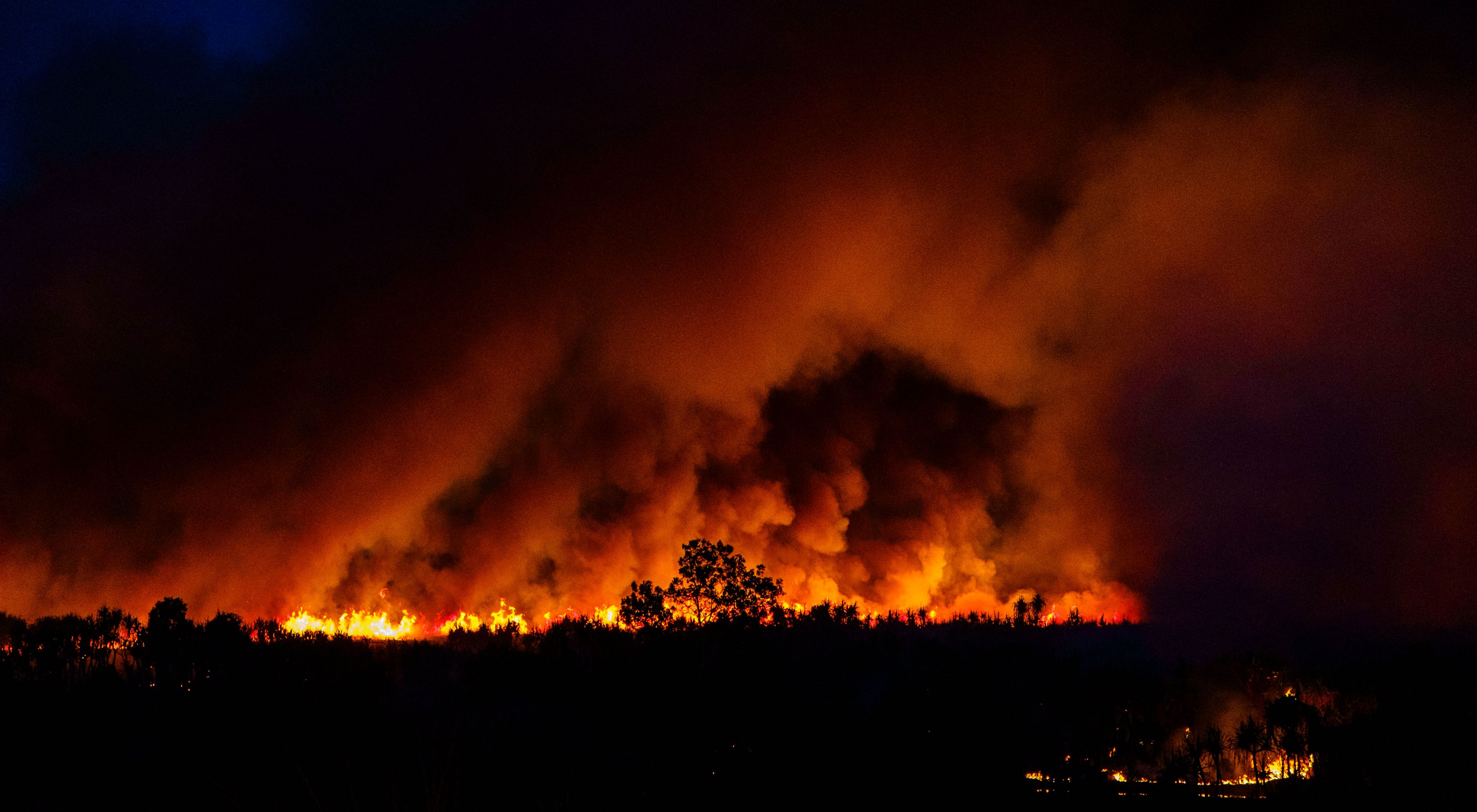Necessary Tips for Bushfire Monitoring to Guarantee Fire Protection

Understanding Bushfire Threat Levels
Understanding the differing degrees of bushfire threat is necessary for reliable preparation and preparation in mitigating prospective threats to residential properties and lives. Bushfire danger levels are normally classified based upon variables such as climate condition, fuel schedule, topography, and historical fire behavior. By understanding these threat individuals, levels and neighborhoods can proactively implement approaches to minimize vulnerability and enhance strength despite possible bushfire occasions.
The very first degree of bushfire threat is reduced threat, where the probability of a bushfire taking place and creating considerable damage is marginal. Risky levels symbolize a considerable risk, with problems conducive to fast fire spread and extreme fire habits.
Understanding these bushfire risk levels enables stakeholders to tailor their preparedness and action activities as necessary, ensuring a proactive and efficient technique to bushfire administration.
Establishing a Defensible Room
Efficient bushfire monitoring starts with developing a defensible room around buildings to boost protection versus potential fire threats. A defensible room is a barrier zone that creates a barrier in between a structure and the bordering combustible plants. This space works as a vital line of protection, offering firefighters a risk-free area to run and aiding to lower the threat of a fire infecting the residential property.
When developing a defensible area, it is necessary to take into consideration the format of the building and the surrounding landscape. Cleaning greenery, especially very combustible plants, within a particular span of the home can help stop the fast spread of fires. Additionally, keeping a well-irrigated zone around the residential property can further enhance its defensibility.
Normal upkeep of the defensible room is crucial to ensure its effectiveness. This consists of cutting overhanging branches, clearing dead greenery, and keeping the location totally free of debris. By spending time and initiative into creating and keeping a defensible room, homeowner can substantially enhance their chances of shielding their homes and assets during a bushfire.
Implementing Fireproof Landscape Design
When developing landscapes to alleviate the danger of bushfires, incorporating fire-resistant components is vital for improving property defense and reducing fire risks. Carrying out fireproof landscaping includes calculated preparation to create a defensible area around structures. Begin by selecting fireproof plant types that are much less likely to ignite and generate lower degrees of combustible materials. Select plants with high moisture material, low oil material, and very little dead vegetation to lower the threat of fire spread. In addition, preserve ample spacing in between plants and keep them appropriately trimmed to avoid fire from conveniently leaping between vegetation.

Producing an Emergency Situation Emptying Strategy
Creating a comprehensive emergency evacuation plan is vital for ensuring the safety and security and health of individuals throughout potential bushfire incidents (BAL Assessment). An efficient discharge strategy must describe clear procedures to comply with in case of a bushfire danger, including assigned evacuation courses, setting up factors, and interaction procedures
To start producing an emergency discharge plan, it is important to assess the specific threats and susceptabilities of your area. Recognize multiple emptying paths that cause risk-free areas away from the fire, considering aspects such as terrain, road availability, and prospective threats. Develop communication channels to alert homeowners of an approaching emptying, utilizing techniques such as alarms, message informs, or door-to-door notifications.
On a regular basis evaluation and exercise the emptying strategy with all citizens or community participants to ensure everybody recognizes their functions and responsibilities. Conduct drills to evaluate the effectiveness of the plan and make any kind of needed changes. By having a well-prepared emptying plan in position, you can enhance the possibilities of a risk-free and organized emptying during a bushfire emergency.
Maintaining Fire Safety And Security Equipment
After developing a detailed emergency situation evacuation prepare for bushfire incidents, it is necessary to focus on the normal maintenance of fire safety and security tools to guarantee optimum functionality and readiness. Normal upkeep of fire safety devices such as fire extinguishers, smoke detectors, emergency alarm, and lawn sprinkler is critical in securing lives and residential or commercial property during a bushfire. When needed., performing routine evaluations, testing, and maintenance of these tools by qualified experts is essential to assure they are in functioning order.
Fire extinguishers ought to be examined frequently for pressure levels, visible damage, and appropriate functionality. By faithfully maintaining fire safety and security tools, people can improve their preparedness and reaction abilities in the occasion of a bushfire.
Final Thought
Finally, reliable bushfire monitoring involves recognizing risk levels, producing defensible spaces, applying fire-resistant landscape design, establishing emptying plans, and preserving fire security tools. By adhering to these essential pointers, people can guarantee better fire defense and safety for their buildings and areas. It is very important to prioritize aggressive measures to alleviate the threats related to bushfires and to be gotten ready you can find out more for emergencies.
By recognizing the subtleties of bushfire threat levels, developing defensible rooms, executing fireproof landscape design, producing extensive evacuation plans, and guaranteeing the maintenance of fire safety tools, individuals and neighborhoods can dramatically bolster their durability against the ravages of wildfires - BAL Assessment. These tips are not only essential for securing against immediate fire threats however also for promoting long-lasting fire protection strategies that can make a significant difference in the face of escalating bushfire dangers
High-risk levels represent straight from the source a considerable threat, with conditions helpful to quick fire spread and severe fire actions. Routine maintenance of fire safety tools such as fire extinguishers, smoke detectors, fire alarm systems, and sprinkler systems is critical in protecting lives and residential property throughout a bushfire.In conclusion, effective bushfire monitoring entails comprehending danger levels, developing defensible rooms, carrying out fire-resistant landscape design, establishing discharge strategies, and keeping fire safety and security tools.